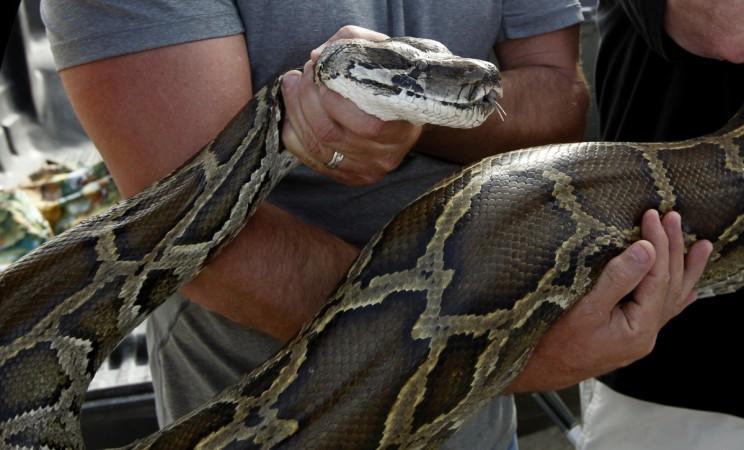
A new study has indicated that a breed of pythons might invade the land of Florida soon. These snakes are said to be deadlier than the existing Burmese pythons.
A new study published in the journal 'Ecology and Evolution, US' states that the Geological Survey researchers took samples of tail tissue from 400 different snakes in South Florida to understand their genetic structure. They wanted to find answers as to why they were spreading at alarming rates and how to control them.
The study showed that most of the snakes were closely related to Burmese pythons but 13 of them had the genetics of the Indian python. They preferred dry landscapes, unlike the invasive Burmese pythons that breed in swamps.
This raises a threat to people living in Florida as the crossbreed of the Burmese and Indian pythons might be capable of adapting to a varied range of landscapes. Scientists call this a 'hybrid vigor'.
The lead author and USGS geneticist Margaret Hunter said, "If the Indian pythons have a wider range, perhaps these Everglades snakes now have that capability. It's quite interesting and quite surprising, but we don't know the extent it's in the population."
The reason for the study is due to the rapid spread of pythons from South Florida to the North and the West part of the state. The researchers conducted the DNA study to know how these snakes were able to adapt to new environments. One reason stated that the snakes in different areas have different DNA, and the crossbreed may have resulted in a much more adaptive snake.
Since the 1980's, the population of snakes have been growing in the Everglades. The python population is so large that there are over thousands of snakes found in South Florida. This causes an imbalance in the ecosystem.
Hunter said that she isn't very clear about how the species got crossed as both Burmese and Indian pythons are very distinct. The study was done on the genetics of the pythons but climate can also play a huge role in evolution. The warmer it gets every year, the snakes will move further north.
"All species do this, but we're watching evolutionary progress right in front of us," Hunter said.

















